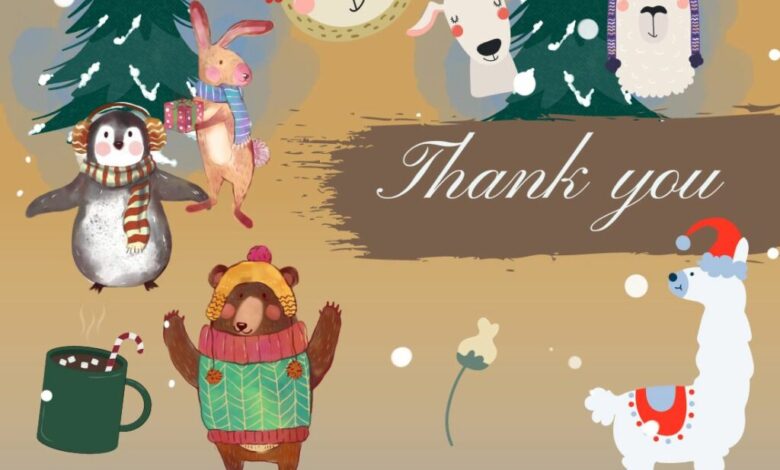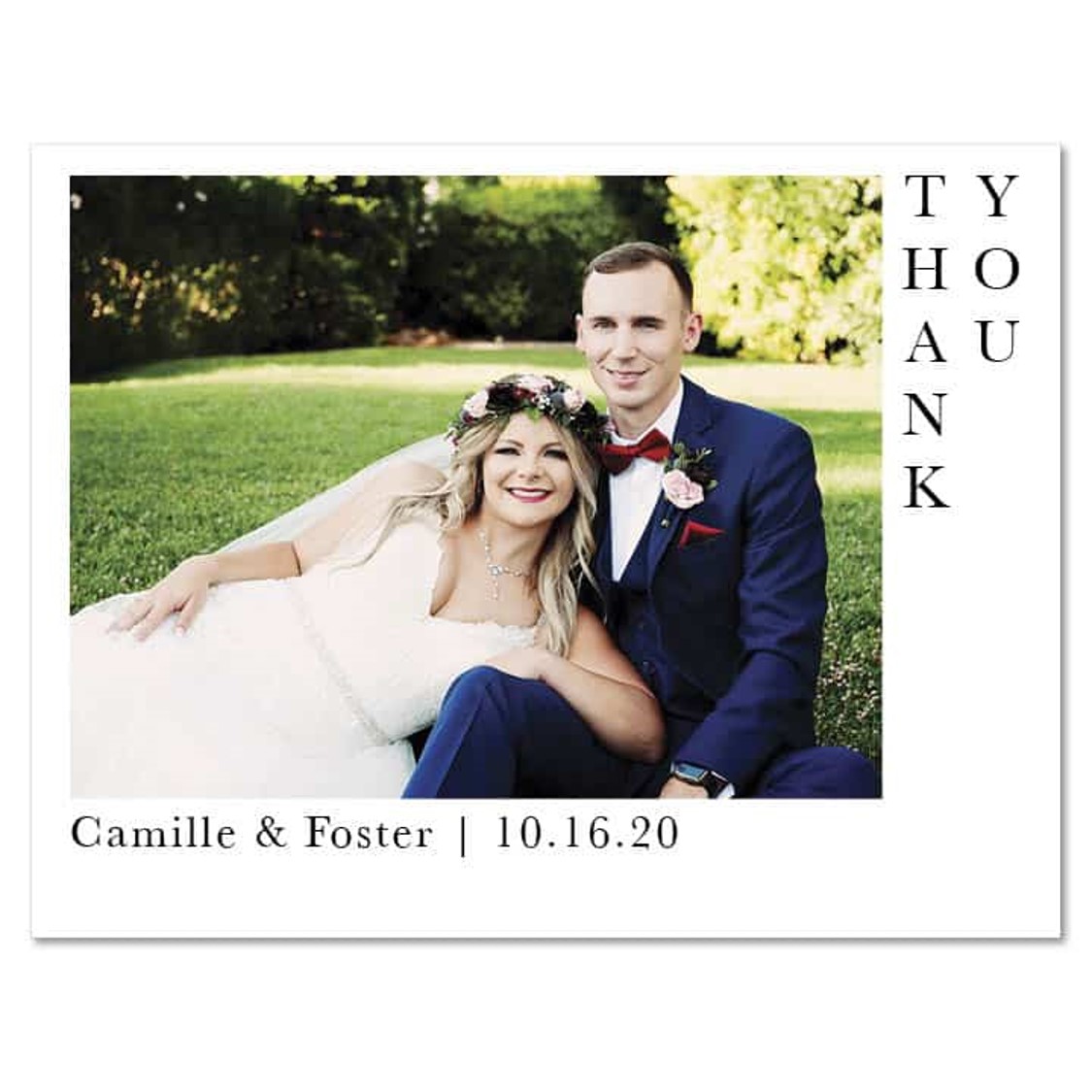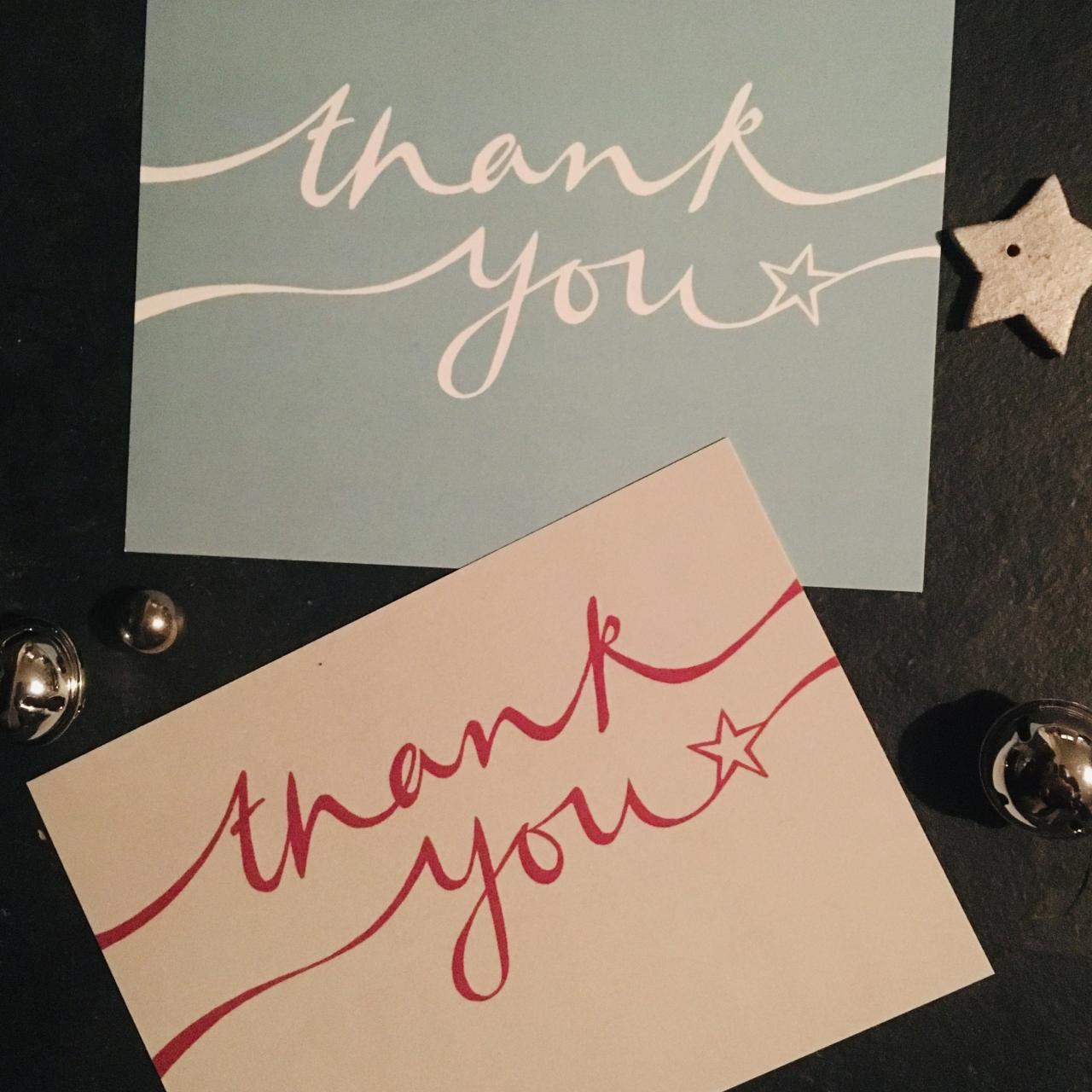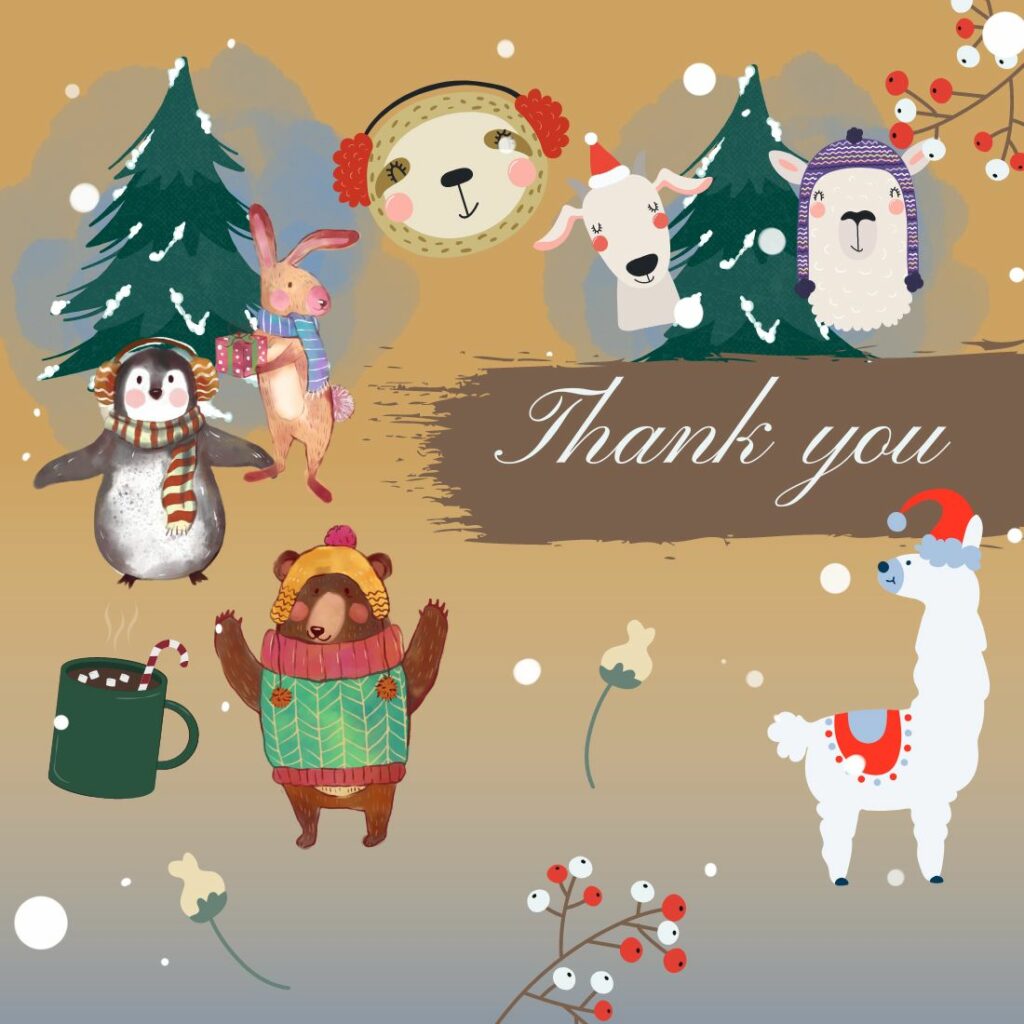
Best Thank You Postcards Design & Send with Style
Best thank you postcards aren’t just pieces of paper; they’re tangible expressions of gratitude, lasting longer than a fleeting email. This post dives deep into crafting the perfect thank you postcard, from choosing the right paper stock and design to mastering the art of heartfelt messaging. We’ll explore various styles, sizes, and printing methods, ensuring your message makes a truly memorable impact.
Whether you’re thanking wedding guests, celebrating a birthday, or expressing professional appreciation, we’ll cover it all. We’ll guide you through choosing the perfect design, writing the perfect message, and even selecting the ideal postage. Get ready to elevate your thank yous from ordinary to extraordinary!
Types of Thank You Postcards
Choosing the right thank you postcard can significantly enhance the impact of your message. The design, size, and paper quality all contribute to creating a memorable and heartfelt expression of gratitude. Consider the recipient and the occasion when selecting the perfect postcard to convey your appreciation.
Thank You Postcard Design Styles
Different styles cater to various tastes and occasions. Selecting a style that aligns with the event and your relationship with the recipient will make the thank you more personal and meaningful.
- Minimalist: Featuring clean lines, simple typography, and a muted color palette. Ideal for expressing gratitude in a sophisticated and understated manner, perfect for professional thank you notes or for those who appreciate simplicity. Imagine a postcard with a single, elegant floral illustration and a concise message in a classic serif font.
- Rustic: Incorporating natural textures, earthy tones, and perhaps hand-drawn elements. This style is well-suited for events like weddings, baby showers, or housewarmings, conveying a warm and inviting feeling. Picture a postcard with a kraft paper background, a simple handwritten font, and a subtle floral watercolor design.
- Modern: Characterized by bold geometric patterns, vibrant colors, and contemporary typography. This style is perfect for expressing gratitude in a fresh and exciting way, suitable for birthdays, graduations, or any celebratory occasion. Visualize a postcard with a geometric design in bright teal and coral, with a modern sans-serif font.
- Playful: Featuring bright colors, whimsical illustrations, and a fun, lighthearted tone. This style is best for informal thank you notes, suitable for friends and family, particularly for occasions involving children or lighthearted events. Think of a postcard with cartoon animals, bright rainbow colors, and a bubbly script font.
Thank You Postcard Sizes and Uses
The size of your postcard directly impacts the amount of space available for both imagery and your message. Consider the length of your message and the visual elements you wish to include when making your selection.
| Size (inches) | Description | Image Space | Message Length |
|---|---|---|---|
| 4 x 6 | Standard postcard size; widely available. | Moderate | Short to medium length message. |
| 5 x 7 | Larger than standard; provides more space. | Large | Medium to long length message. |
| 3.5 x 5 | Smaller, more compact size. | Small | Short message; ideal for simple thank yous. |
| A6 (4.13 x 5.83) | Common European size; offers a balance of space. | Moderate | Short to medium length message. |
Paper Types and Finishes for Thank You Postcards
The paper you choose significantly influences the overall feel and aesthetic of your thank you postcard. Different options offer unique textures and visual impacts.
- Matte: A classic choice offering a subtle texture and a non-reflective surface, ideal for showcasing detailed images and intricate designs. The matte finish provides a sophisticated and understated look.
- Glossy: Provides a vibrant, high-shine finish that makes colors pop. Best for postcards with bold graphics or photographs, although it may not be suitable for detailed text.
- Uncoated: Offers a natural, unrefined texture, ideal for a rustic or handcrafted look. This paper type often absorbs ink well, creating a vintage or handmade feel.
- Textured: Provides a tactile experience with unique patterns or embossed designs. This adds a luxurious and personalized touch, making the postcard feel more special.
Postcard Messaging & Wording

Source: shopbwa.com
Crafting the perfect thank you postcard message requires more than just a simple “Thanks!” It’s about conveying genuine appreciation in a concise and heartfelt way, tailored to the specific occasion and your relationship with the recipient. The right words can make your thank you truly memorable.The key to effective postcard messaging lies in personalization and sincerity. Avoid generic phrases and instead focus on specific details that demonstrate your gratitude.
Remember, the goal is to make the recipient feel valued and appreciated for their thoughtfulness. Short, sweet, and personal messages are always best for postcards.
Wedding Thank You Postcard Messages
Wedding thank you postcards should express gratitude for the gift, attendance, or both. They should also reflect the joy and excitement of the wedding day. Consider mentioning a specific detail you remember about the guest’s presence or gift to make it more personal.
Example: “Thank you so much for celebrating our wedding with us! Your presence meant the world, and the beautiful vase was the perfect addition to our new home.”
Example: “We were so touched by your thoughtful gift! The blender is already being put to good use in our new kitchen. Thank you again for being a part of our special day!”
Birthday Thank You Postcard Messages
Birthday thank you postcards should acknowledge the gift or gesture and express appreciation for the thoughtfulness. Mentioning a specific detail about the gift or how you spent your birthday makes the message more personal.
Example: “Thank you so much for the lovely birthday card and the delicious chocolate! It was the perfect treat to enjoy on my special day.”
Example: “Your thoughtful gift was such a surprise! The book you picked out is exactly what I wanted to read next. Thanks again for making my birthday so special!”
Business Thank You Postcard Messages
Business thank you postcards should be professional yet warm. They should express gratitude for the opportunity, meeting, or collaboration. Focus on the specific action you are thanking them for.
Example: “Thank you for taking the time to meet with me yesterday. I appreciate you sharing your insights on [topic].”
Example: “Thank you for your collaboration on the recent project. Your expertise was invaluable, and I’m grateful for your contributions.”
Sympathy Thank You Postcard Messages
Sympathy thank you postcards should be simple and heartfelt. They should express gratitude for the support and condolences received. Keep the message brief and avoid overly sentimental language.
Example: “Thank you for your kind words and support during this difficult time. Your thoughtfulness means a great deal.”
Example: “We appreciate your sympathy and support. Your presence at the service meant a lot to us.”
Short, Impactful Thank You Messages for Different Relationships
Here are some short, impactful thank you messages tailored to different relationships:
A short paragraph explaining that these examples showcase concise yet heartfelt messages designed to suit the unique dynamics of various relationships. The tone and level of formality vary accordingly to reflect the existing bond between the sender and recipient. This personalization is crucial for genuine and impactful thank yous.
- Close Friends: “Thanks for everything, you’re the best!”
- Family: “So grateful for your love and support.”
- Colleagues: “Thanks for your help on the project!”
- Acquaintances: “Thank you for your kind gift.”
Design Elements & Aesthetics

Source: etsystatic.com
Crafting a visually appealing thank you postcard is just as important as the heartfelt message within. The design elements you choose significantly impact the overall impression your postcard leaves on the recipient. A well-designed postcard elevates your expression of gratitude, making it more memorable and meaningful. Let’s explore how typography, color palettes, and layout contribute to creating a stunning and effective thank you postcard.
Typography Selection
The choice of font significantly influences the tone and style of your thank you postcard. Different fonts evoke different feelings, so selecting the right one is crucial. For example, elegant script fonts like Edwardian Script ITC or Playfair Display convey a sophisticated and formal tone, perfect for wedding thank you notes or expressing gratitude for significant gifts. In contrast, casual sans-serif fonts like Open Sans or Montserrat create a friendly and approachable feel, ideal for thank you notes to friends and family.
For a more modern and minimalist look, consider geometric sans-serif fonts like Futura or Helvetica. Using a consistent font throughout the postcard ensures visual harmony and enhances readability. Avoid using too many different fonts, as this can make the postcard appear cluttered and unprofessional.
Color Palette Selection, Best thank you postcards
Color psychology plays a vital role in design. The color palette you choose for your thank you postcard should align with the occasion and reflect the personality of the sender and recipient. Muted, pastel shades like blush pink, soft blues, and sage green create a gentle and calming atmosphere, suitable for expressing gratitude for thoughtful gestures or milestones.
For more vibrant and celebratory occasions, bolder colors like coral, sunny yellow, or deep teal can be used. Consider the recipient’s preferred color schemes as well; a personalized touch adds a special element to your thank you. Remember to maintain a balance; too many colors can be overwhelming, while a monochromatic palette can feel stark. The key is to choose colors that complement each other and create a visually pleasing composition.
Layout Options for Text and Images
The arrangement of text and images on your postcard significantly impacts its visual appeal and readability. Different layouts create different moods and effects.
- Centered Layout: This classic approach places the text and image symmetrically in the center of the postcard. It creates a balanced and harmonious look, perfect for simple and elegant designs. Imagine a single, high-quality photograph centered, with a concise thank you message underneath.
- Asymmetrical Layout: This layout breaks the symmetry, placing elements off-center to create visual interest and dynamism. For example, a large image could occupy most of the left side, with text positioned on the right, creating a more modern and less formal feel. This approach works well when you have a striking image you want to showcase.
- Split Layout: This layout divides the postcard into distinct sections, using lines or borders to separate text and images. For instance, one half could feature a photograph, while the other half contains the thank you message. This is a great way to organize more information or showcase multiple images.
- Layered Layout: This involves overlapping text and images to create depth and visual texture. For example, a semi-transparent image could be placed behind the text, adding a subtle visual layer. This approach is ideal for creating a sophisticated and artistic feel.
Printing & Production: Best Thank You Postcards
Getting your thank you postcards printed is the final, crucial step in showing your appreciation. The printing method you choose significantly impacts the quality, cost, and overall feel of your cards. Let’s explore your options and the process of bringing your design to life.
Offset Printing vs. Digital Printing
Offset printing and digital printing are the two main methods for producing thank you postcards. Offset printing is a traditional method involving printing plates and an offset cylinder. It’s best suited for large print runs (typically 500 or more) because the initial setup costs are high. Digital printing, on the other hand, prints directly onto the paper, making it ideal for smaller runs and allowing for greater flexibility with personalization and variable data.
- Offset Printing: Pros – High-quality results, vibrant colors, cost-effective for large quantities. Cons – Higher upfront costs, longer turnaround times, less flexibility for personalization.
- Digital Printing: Pros – Lower upfront costs, faster turnaround times, ideal for smaller print runs, easy personalization. Cons – Can be slightly less vibrant than offset printing, may not be as cost-effective for very large quantities.
The best method depends on your budget, quantity needed, and the level of personalization desired. For a small business sending thank you notes to 100 clients, digital printing offers a good balance of cost and speed. A large corporation sending out 10,000 cards might find offset printing more economical.
Designing and Ordering Custom Thank You Postcards Online
Designing and ordering your postcards online streamlines the process. Many online print shops offer user-friendly design tools and templates, allowing you to create professional-looking cards without needing advanced design software.File preparation is crucial. Most online printers specify acceptable file formats (typically high-resolution PDFs or JPGs), color modes (CMYK for print), and bleed settings (the extra area around your design that gets trimmed).
Carefully review their guidelines to avoid issues. Proofing is equally important; always review a digital proof before approving the print job to catch any errors in design or text. Many services offer free proofs, but others may charge a small fee.
Creating Professional-Looking Thank You Postcards Using Design Software
For greater design control, readily available software like Canva, Adobe Photoshop, or Illustrator can be used. These tools provide flexibility and precision.
- Choose a Template or Start from Scratch: Many templates are available online, offering a starting point. Alternatively, you can design from scratch.
- Select High-Quality Images and Fonts: Use high-resolution images to ensure crisp printing. Choose fonts that are legible and complement your brand.
- Craft Your Message: Write a sincere and concise thank you message. Keep it personal and specific.
- Maintain Consistent Branding: Use your brand colors and logo (if applicable) for a cohesive look.
- Set Up Bleed and Safe Zones: Add bleed (typically 1/8 inch) around your design to prevent white edges after trimming. Keep important elements within the safe zone to avoid them being cut off.
- Export as a High-Resolution PDF or JPG: Follow the printer’s specifications for file type, resolution, and color mode.
- Review and Proof Carefully: Check for typos, misspellings, and any design flaws before ordering.
Following these steps ensures your thank you postcards are professional, visually appealing, and effectively communicate your gratitude. Remember to account for printing costs and shipping times when planning your project.
Postage & Mailing

Source: masterbundles.com
Getting your thank you postcards into the hands of your recipients is just as important as the design and message itself. The right postage ensures timely delivery and contributes to the overall positive impression you want to create. Choosing the appropriate mailing method and addressing your postcards correctly will make all the difference.Proper postage and handling are crucial for timely delivery and maintaining a professional image.
Delayed or lost postcards can negate the positive sentiment you’re trying to convey. Additionally, a neatly addressed and handled postcard shows attention to detail, reflecting well on you or your business.
Postage Options
Several postage options are available, each catering to different needs and budgets. Standard mail offers the most economical solution, while expedited services prioritize speed for urgent deliveries. Understanding these options will help you choose the best fit for your needs.
- Standard Mail: This is the most cost-effective option and typically takes several days for delivery within the same country. It’s ideal for non-urgent thank you notes where speed isn’t paramount. The cost is generally lower per postcard, making it a budget-friendly choice for large mailings.
- Expedited Services (e.g., Priority Mail, Express Mail): These services guarantee faster delivery times, often within one to two days, depending on the service and destination. They are more expensive than standard mail but are beneficial when a quicker delivery is crucial, such as for time-sensitive thank you notes or when acknowledging a recent event.
Addressing and Handling
Accurate addressing is paramount. Use a clear and legible font, ensuring the address is complete and correct, including the recipient’s name, street address, city, state/province, zip/postal code, and country (for international mail). Illegible addresses or missing information can lead to delays or non-delivery. Handle postcards carefully to avoid bending or damage. Consider using sturdy envelopes for added protection, especially if your postcards have embellishments or textures that could be easily damaged.
Visually Appealing Envelopes
While the postcard itself is the star, the envelope can enhance the overall presentation. A well-designed envelope complements the postcard and adds a touch of elegance. Simple and clean designs are often the most effective. Consider using high-quality paper stock that matches the postcard’s aesthetic. You can subtly incorporate design elements from the postcard, such as a small logo or color scheme, but avoid overwhelming the envelope with too much detail.
A simple, elegant font for the address is essential. For example, a simple script font might pair well with a rustic postcard design, while a clean sans-serif font would suit a modern design. Using a return address label ensures your sender information is easily visible.
Examples of Exceptional Thank You Postcards
Thank you postcards, when done well, can be incredibly impactful. They go beyond a simple acknowledgment; they create a lasting impression and strengthen relationships. The key lies in thoughtful design and sincere messaging, tailored to the specific occasion and recipient. Let’s examine some examples that exemplify excellence in thank you postcard design and execution.
Finding the best thank you postcards can be a surprisingly fun process! I recently learned a lot about effective visual communication while working on a project, which reminded me of the power of a well-designed image – kind of like what you need when getting it on with YouTube and creating eye-catching thumbnails. Ultimately, though, both hinge on that same principle of making a strong first impression, something those perfect thank you postcards definitely achieve.
Exceptional Thank You Postcard Examples
Below is a table showcasing five exceptional thank you postcards, analyzing their design elements, messaging, and overall effect. Each example demonstrates how visual appeal and heartfelt words combine to create a memorable and effective thank you.
| Image Description | Messaging Style | Occasion | Overall Impression |
|---|---|---|---|
| A minimalist design featuring a single, vibrant sunflower against a muted cream background. The sunflower is slightly off-center, creating a sense of casual elegance. The color palette is warm and inviting. | Short and sweet, expressing genuine gratitude for a thoughtful gift. The message focuses on the positive feelings evoked by the gift, rather than simply stating “thank you.” For example: “Your sunflower seeds brought so much sunshine to my day! Thank you.” | Birthday | Warm, heartfelt, and memorable due to its simplicity and evocative imagery. The sunflower perfectly complements the cheerful occasion. |
| A postcard showcasing a watercolor painting of a serene beach scene at sunset. Soft, pastel colors dominate, conveying a sense of peace and tranquility. | More formal and detailed, expressing sincere appreciation for hospitality and a wonderful stay. The message highlights specific details of the experience, making it personalized and genuine. For example: “Thank you so much for your warm hospitality during my stay. The sunset views from your balcony were breathtaking, and I’ll cherish the memories.” | Post-vacation thank you to a host | Elegant, sophisticated, and reflects the peaceful nature of the occasion. The imagery perfectly complements the message of relaxation and gratitude. |
| A playful design with a cartoon illustration of a group of friends celebrating. Bright, bold colors are used, creating a fun and energetic feel. | Informal and enthusiastic, expressing excitement and gratitude for a fun time spent together. The message uses lively language and inside jokes to create a strong connection with the recipient. For example: “Thanks for the epic birthday bash! Still laughing about [inside joke]. Best night ever!” | Post-party thank you | Upbeat, joyful, and reflects the celebratory nature of the occasion. The cartoon illustration adds a personal touch and enhances the fun-loving tone. |
| A sophisticated design featuring a black and white photograph of a cityscape at night. The image is sharp and detailed, conveying a sense of modernity and elegance. | Formal and concise, expressing gratitude for a business opportunity or collaboration. The message is professional yet warm, focusing on future prospects and mutual success. For example: “Thank you for the opportunity to collaborate on the X project. I look forward to continued success working alongside you.” | Business thank you | Professional, elegant, and conveys a sense of appreciation and mutual respect. The sophisticated imagery reflects the formal nature of the occasion. |
| A rustic design featuring a hand-drawn illustration of a bouquet of wildflowers. The style is charming and slightly imperfect, creating a handcrafted feel. | Heartfelt and personal, expressing gratitude for a kind gesture or act of support. The message is deeply appreciative and emphasizes the impact of the recipient’s actions. For example: “Your kindness during a difficult time meant the world to me. Thank you for your support.” | Thank you for support during a difficult time | Warm, genuine, and conveys empathy and appreciation. The hand-drawn illustration adds a personal touch and enhances the heartfelt tone. |
Conclusion
Creating stunning thank you postcards is easier than you think! By carefully considering design elements, messaging, and printing options, you can craft truly personalized and memorable keepsakes. Remember, a well-designed postcard isn’t just a thank you; it’s a reflection of your appreciation and thoughtfulness. So, go ahead, unleash your creativity and make every thank you count!
FAQ Corner
How much does it cost to print thank you postcards?
The cost varies greatly depending on the printing method (digital vs. offset), quantity, paper stock, and finishing options. Expect to pay anywhere from a few cents to a dollar or more per card.
Where can I find unique postcard designs?
Etsy, independent designers on sites like Creative Market, and online print shops offer a huge variety of unique postcard designs. You can also design your own using software like Canva or Adobe Photoshop.
What’s the best way to address a thank you postcard?
Use a clear, legible font. Write the recipient’s name and address neatly. For formal occasions, consider using a return address label.
How long does it take for thank you postcards to arrive via standard mail?
Standard mail delivery times vary by location, but generally, expect 2-5 business days within the same country.
